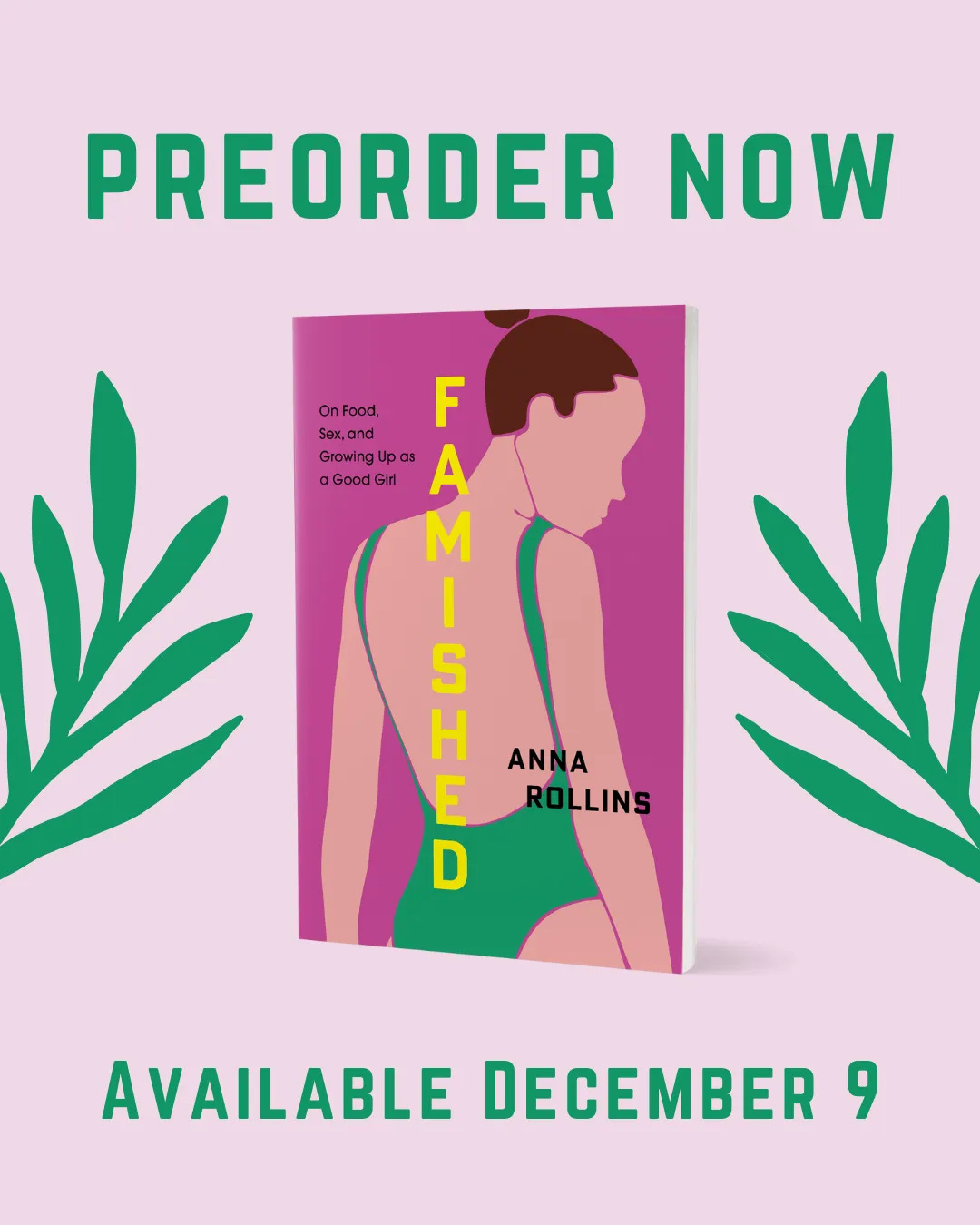Moms don't have time to network
On writing for Joyland and making connections during an episode of Paw Patrol
Coming December 9, 2025 & available for PREORDER now!
I placed an essay in a dream outlet while I cuddled on the couch with my kids.
One evening, my sons were watching Paw Patrol, and I was cuddled up beside them, phone in hand. On Twitter, a controversy was erupting centered around a literary journal, Hobart.
Scrolling my phone while my kids watched television was a form of professional networking for me — similar to attending a cocktail party, except I didn’t have to pay for a babysitter, and I could wear my PJs.
⭐A brief aside about feeling cut off from networking opportunities because I was a mom living in Appalachia⭐
For a long time, I felt like I couldn’t figure out how to break into publishing because I didn’t have many connections. Sure, I taught in higher education — but I’d always been affiliated with the same institution. I had an MA, but I didn’t have an MFA or PhD. And I’d always lived in the state of West Virginia. West Virginia certainly has its own literary scene — but I felt worlds away from NYC and other locations that people typically associate with publishing.
As a mom to young children, I felt limited insofar as I could attend face-to-face networking opportunities. I couldn’t go to happy hour because I needed to pick the kids up from school. And then cook dinner. Give baths. Read bedtime stories.
While my social life wasn’t nonexistent, it certainly wasn’t vibrant. I felt conflicted about this. I was grateful for my beautiful family. And I also felt trapped.
But during the pandemic, I started stumbling upon a wealth of publishing resources available online and advertised on social media. Maybe these had always existed (and I simply had not been paying attention) — but I have the sense that opportunities really exploded during those years the world went remote. Someone living in West Virginia (me!) could access networks via Zoom and other platforms, that in the past, only people in bigger cities could.
One of the reasons I enjoy writing this Substack, sharing background details, process, and strategy, is because I have always felt like someone on the outside. I wanted to be a writer and editor for as long as I can remember, but around the time I went to college, I internalized a belief that people like me — people who went to state schools in West Virginia, people who weren’t connected to elite institutions or money — had no way in.
I re-routed my career aspirations toward teaching — something I also loved. But it was also a profession that felt way more accessible, way more within reach. People didn’t roll their eyes when I said, “I’m going to be a teacher.” When I said I wanted to go into editing and publishing, I could almost hear the chuckles.
When I write these Substack posts, I hope that I’m reaching people who have writing dreams who believe that, for whatever reason, people like them can’t possibly achieve. Not because they lack skill or talent or drive. But because of the life circumstances they’ve found themselves in.
Okay — back to Twitter. There was some drama going on with Hobart, and I was particularly tuned in because I’d just gotten a flash essay accepted there the week before. It seemed that the EIC of the journal had published a controversial interview, and then all of the editors beneath her resigned in protest.
Literary Twitter was abuzz — and I was deflated. I’d been so excited about this acceptance. While I’d had some success in popular outlets, this had been one of the first literary journals that had said yes to my work. Getting affirmation from a cool literary journal made me feel like I was breaking into a different kind of crowd — the exclusive kind.
🌟A brief interlude on some distinctions between literary and popular outlets🌟
To write for popular outlets, I’d had to teach myself to state explicit views, to do a bit more telling rather than showing. I might include a scene or two of narrative, but I kept descriptive detail to a minimum, focusing primarily on providing evidence to make a larger point. And though this was completely appropriate for that genre, this was not the type of writing that made me feel like I was flying.
Writing a piece for a literary outlet is often less straightforward with less adherence to formula. There’s usually more showing rather than telling. Making meaning from scene, after all, requires more work on the part of the reader. It’s more satisfying for a reader to come to her own conclusions. But it’s an exercise that also requires more attention.
When more is required from your readership, you will naturally have fewer readers (though, I imagine if this theory about readership numbers were mapped onto a graph, it would look more like a bell curve rather than a diagonal line).
When you think about audience, the differences between the genres make total sense: if you’re writing for the general public, you have to make your writing accessible. One way you make the writing accessible is by adhering to sets of expectations. Now, you don’t want to bore the general public — people aren’t stupid, and no one wants to be talked down to in a piece of writing. Still, there are things you need to do to make their reading experience less work.
One way to ease the burden of consumption for the general reader is to adhere to a standard formula or plot. You might make a surprising claim or take a controversial stance — but you’re not going to structure your essay in a surprising way. You’re going to be predictable in the way you present your material — and that’s okay! That gives you an opportunity to present an unpredictable idea to the largest possible audience.
But back to my first literary acceptance: I was so excited to place a piece that relied more on descriptive detail than on didacticism.
It felt like a huge win!
Except, the editor who accepted my piece had just resigned. What to do?
Well, as I scrolled Twitter (Paw Patrol still playing in the background), I saw a number of other literary journals offering to give priority consideration to Hobart’s accepted but unpublished work.
I took screenshots of these offerings. Some were made by editors at very small journals — but some of them were from more established places. Dream publications like Joyland, for instance. (My favorite writer,
, had published there — so obviously, I wanted to, too).I reached out to the editor at Joyland via email. I mentioned that I saw her post about giving priority consideration to accepted but unpublished Hobart pieces, and I sent her my essay. Soon after, I received this response:
While I think there's so much to admire here (I love the voice and style), I ultimately don't think it's a right fit for Joyland. I would, however, like to invite you to submit directly to us again.
I knew that this invitation to submit directly was a special opportunity and that I couldn’t send crap, but I needed to act soon. I couldn’t just sit on an invitation like this for another year, or even six months (well, I suppose I could — but it felt like taking a chance).
So, I went through my creative files to see what I had. I’d been working on an essay about being born in Chemical Valley, about having three thumbs at birth, and about the Freedom Industries chemical spill that happened around the time we started trying to grow our family. It was weird and regional and literary. And Joyland is also weird and regional and literary. I decided to read through Joyland’s archives to get a better sense of their vibe.
⭐A TIP FOR YOU⭐
If you have a goal publication, scroll through their archives and ask yourself some questions:
What do their titles sound like? Look for patterns related to length and structure. Do they often use an adjective/noun combo? A phrase? One sentence? Multiple? Are they on-the-nose, or do they make you wonder?
How do their pieces open? Do they start in-scene? Do they place the trouble up front? Do they ask some quirky rhetorical question of the reader?
How long are they? I literally copy and pasted their published essays into Word to get a sense of the average length. Don’t send an outlet 5,000 words if their pieces are usually 2,000. I mean, I guess you could. But, you know, good luck.
I spent the next month revising my essay to align with some of Joyland’s conventions based upon my analysis of the archives. And when I sent the piece off to the editor (referencing her invitation to submit directly at the beginning of my email), she loved it and said she wanted to publish it.
Here’s the final product: Finger Eleven | JOYLAND PUBLISHING
Tell me in the comments: have you ever felt “on the outside”? What are your favorite ways to network? And do you have a dream literary journal where you would love to place a piece?
This is part of a monthly series called Path to Publication.
In it, I will unpack the story behind my stories. These reflections are part process, part strategy.
At the beginning of 2022, I had, essentially, zero bylines. Since then (in the span of two years), I’ve published nearly 50 short essays. It’s not like I became particularly prolific. I’ve always been a writer. I just became serious about learning the tips and tricks for placing a piece in a popular outlet. And that’s what I’m looking forward to sharing with you.








Anna- thank you so much for your candor. It’s so easy to make assumptions about someone’s journey. I honestly just assume folks that are publishing as much as you are have had an easy trajectory, but the reality is the industry is a tough nut to crack! Glad you’re creating networking opportunities here:)
My dream journal since forever is The Fairy Tale Review. I’ve always felt like an outsider as a writer, even while getting my MFA, because the thing that really lights me up is writing re-imagined fairy tales. I love using universal stories that we all knew as kids and building upon them to add to the conversation in a surprising and sometimes creepy way. But people always thought I was just too weird. Some hear the words “fairy tale” and just get completely turned off. But then I found out about The Fairy Tale Review and devoured everything they published, and read everything by the editor Kate Bernheimer as well. Rejected. Every year. This time around it took the editors two years to send their rejection email my way. It hurts but actually it pushes me to create the best thing I can write and work towards a deadline in hopes that this is the year. Being a mom and with a full time job, I really need that incentive. This year, FTR’s theme is food, and I was just clobbered with inspiration so I hard I saw stars. So I foolishly think: this might just be my year…